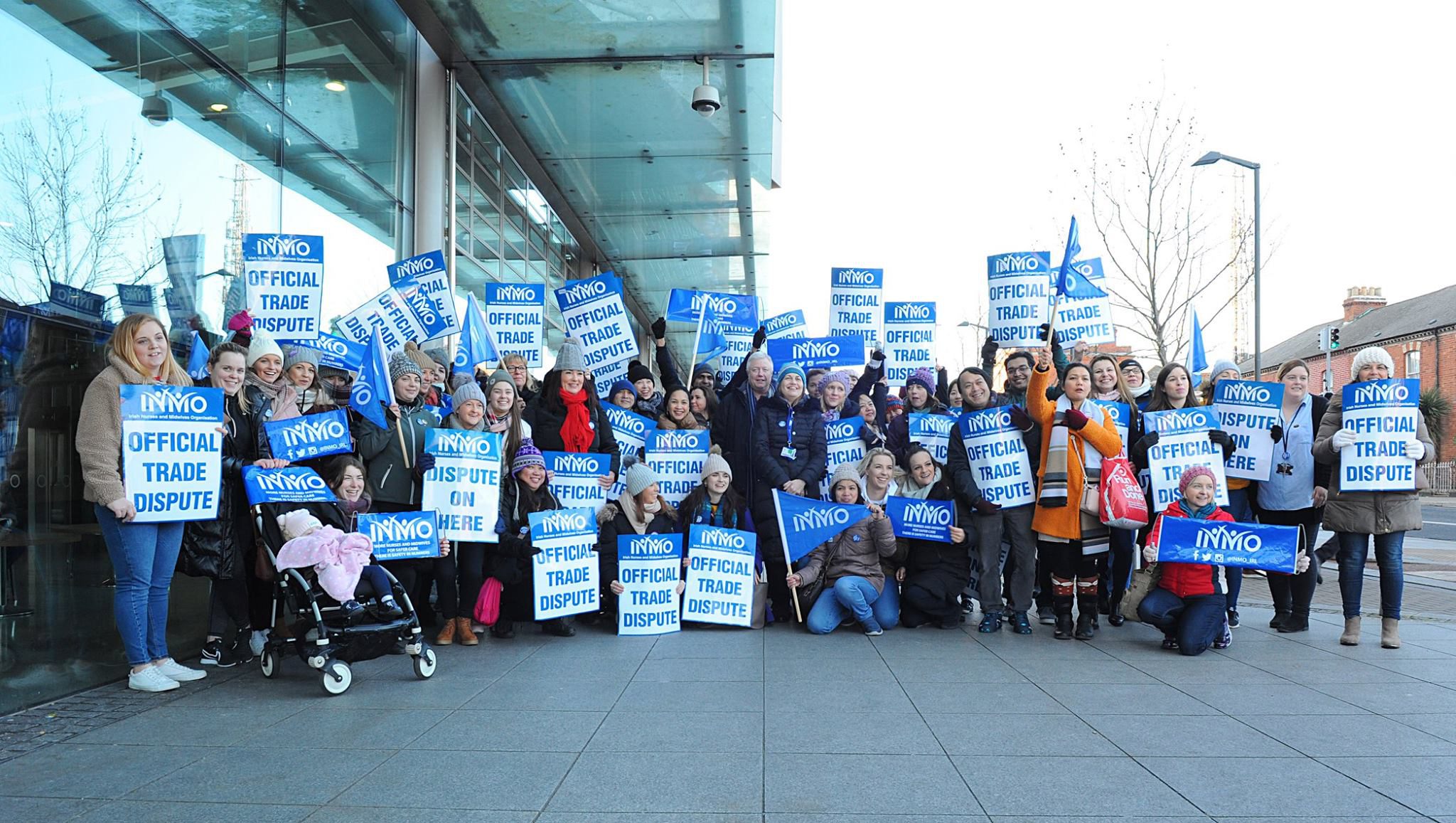
After the 2008 financial crisis, the Irish government resolved to cut billions from state services in line with the austerity programme imposed by the EU and IMF. Government departments were downsized, the welfare system hollowed out, and public sector wages plummeted. In this economic climate, the health service was hit with unprecedented cutbacks, with over €3.3bn slashed from its budget during the recessionary period. The number of hospital beds fell by 2,000, waiting times soared, and home help services were decimated. On top of this, several state healthcare subsidies were removed, forcing Ireland’s population to spend more on poorer quality treatment.
The resultant care crisis was exacerbated by the government’s attempt to drive down the number of public sector health workers. In 2009, a moratorium was placed on hiring or promoting staff across the entire health service. This, coupled with chronically depressed wages and the introduction of a voluntary redundancy scheme, caused a 12% drop in overall staff numbers. Nurses and support workers quit en masse to join the private sector or find employment abroad. Their departure created systemic inefficiencies which made the public health service more expensive to run and more difficult to work in, according to the latest academic study. One expert notes that Ireland has seen “the biggest proportionate drop in healthcare across the whole European region” as a result of its fiscal reforms.
Now, with Irish prime minister Leo Varadkar touting an economic revival, nurses and midwives have felt the disparity between his recovery narrative and their untenable working conditions. While health spending has increased in recent years, it has not counteracted the effects of ‘long-term underfunding’, as a recent report makes clear. The incremental 1% wage hikes given to public sector workers cannot keep pace with rising rent and consumer costs, creating hardship for nurses across the pay scale (who still earn €7k less than other health professionals at the same level of qualification). Recruitment and retention issues continue to bite, with agency workers and unpaid students being used to “plug the gaps” in the system. Meanwhile, the government has refused to ring-fence funding for new healthcare staff, leaving employment figures languishing beneath their 2008 levels despite a significant spike in demand.
Public anger at this situation reached its apex last month, when talks between the Irish Nurses and Midwives Organisation (INMO) and the government broke down, with the latter rebuffing demands for adequate staffing and a liveable wage. The INMO subsequently called a three-day strike after 95% of its members voted in favour of industrial action. All appointments for outpatients, inpatients and surgeries were cancelled, while nursing and rehabilitation clinics across the country closed their doors. The walkout was aided by the Psychiatric Nurses Association, who refused overtime work to highlight how vital it has become for the beleaguered service. Hospital operations were reduced to a minimum, affecting tens of thousands of patients and prompting widespread outrage at Varadkar’s rejectionist stance.
The nurses’ action is the latest iteration of a broader social movement that has shaken the Irish establishment in recent months. Many of the strike organisers were heavily involved in the Repeal campaign, which overturned the country’s decades-old political consensus by winning the demand for legal access to abortion in May last year. It was the resounding success of the pro-choice movement that galvanised and politicised health workers across several generations, equipping them to take on the current struggle.
A prominent group of the nurses’ supporters – on the picket lines and in parliament – have also been at the forefront of a campaign to combat Ireland’s acute housing shortage. Left parties like Solidarity and People Before Profit have gained popularity by drawing links between a damaged health sector and a severe, nationwide homelessness problem, both of which emblematise the exclusion of the working class from Ireland’s alleged economic recovery. In this context, the INMO strikers are not simply seeking a better pay cheque; they are, as Imre G. Szabó writes, “reenergizing the fight against austerity as a whole” by challenging the discourse of scarcity which underpins Varadkar’s public spending plans.
With an astounding 74% of the population backing the nurses, the resonance of this challenge is undeniable. 40,000 people participated in the strike, while thousands more marched with them at a national rally on 9 February. Solidarity events in India, Australia and Britain attracted hundreds of healthcare workers (many of them Irish expats), and messages of support poured in from nurses’ associations as far afield as the US and Sudan.
The question is whether this momentum can be maintained in light of a compromise pay deal which has just been brokered by the Labour Court. The proposals give nurses an average pay rise of 2.5% and set new staff targets. Yet Ireland’s growing inflation rate means that, if economic forecasts are correct, 88% of this nominal wage increase will be lost by 2020 (which is before the full pay gains will come into effect for many workers). In return for this minimally improved salary, nurses must accept a series of cost-saving ‘productivity measures’. Should these measures fail to deliver their projected savings, the entire deal can be suspended. This means the nurses’ gains are tied to the condition of the national economy and the health service, both of which are unstable after years of mismanagement.
INMO members will vote on the deal next month. If they reject it and return to the pickets, they will embolden others to join them. 7,000 support staff represented by Ireland’s largest union, including healthcare assistants and hospital aides, are currently considering industrial action. Hundreds of employment scheme supervisors have already gone on strike for pension rights, while the government has faced intense pressure to negotiate with teachers and police unions in the hope of preventing similar walkouts. Patently, a decade of deep funding cuts has ravaged services across the board. With the fallout threatening to paralyse Ireland’s public sector, the nurses’ next move could be decisive.